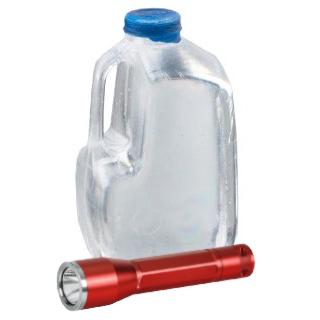We use cookies to make your experience better. To comply with the new e-Privacy directive, we need to ask for your consent to set the cookies. Learn more.
Water Forklift Batteries More Efficiently — By Hand
There's been a lot of buzz about single-point battery watering systems lately. It's true that an automated watering system, fully integrated into charging racks, is probably your most efficient, safest option. But how many companies actually take advantage of this solution?
As recently as September 2015, trade publication Modern Materials Handling reported that 70 percent of the industrial batteries in North America are watered by hand. Luckily, there are plenty of ways to improve efficiency, even during manual watering tasks.
Watering Industrial Batteries The Old-Fashioned Way

A maintenance manager at an Oregon warehouse talked to industry journal Material Handling and Logistics back in 2006. Here's how he described his company's battery watering system:
"In the past, operators had to check their batteries constantly to ensure appropriate water levels were maintained to prevent dry cells. If they found a battery needed water, they had to fill an 18-cell battery one cell at a time using a one gallon jug. It used to take 15 to 20 minutes to change and water a single battery."
That's fairly typical for North American forklift fleets. Many facilities still rely on two tools to keep forklift battery electrolyte levels steady — a flashlight and a jug.
Quicker, Tidier Battery Watering With Forklift Battery Maintenance Equipment
The problems with traditional watering go deeper than inefficiency. When staff add water to forklift batteries, they risk exposure to electrolyte itself. It’s tough to control the flow from a gallon jug; one slight bump and staff could splash acidic electrolyte onto themselves.
 This brings us to an important point. No matter what type of battery watering equipment you provide, staff should always outfit themselves in the full range of personal protective equipment before watering batteries by hand. That includes:
This brings us to an important point. No matter what type of battery watering equipment you provide, staff should always outfit themselves in the full range of personal protective equipment before watering batteries by hand. That includes:
- Chemical splash face shields.
- Acid-resistant goggles.
- HAZ-MAT boots.
- Acid-resistant aprons.
- Neoprene gloves
Once you’ve provided protection from electrolyte, there are a few pieces of equipment that will improve safety and efficiency when it’s time to water the batteries. You need at least two essential tools in your battery watering kit: a portable water cart and an angled watering gun. Selections of both are available from Solus Group.
The tank empowers staff to add water to batteries wherever they’re found. This is actually a key safety feature; too often, battery room operators lean dangerously between forklift battery stands to add water to distant cells. With a portable tank, forklift operators can water batteries anywhere with full, 360-degree access to the top of the case.
A dedicated watering gun provides targeted access directly to cells. Even better, it controls the flow of water to reduce overwatering and dangerous splashes. With these two relatively inexpensive pieces of equipment, you can simplify a crucial maintenance task.
The industry has come a long way from the days of jugs and flashlights. Make sure your facility has the equipment employees need to maintain batteries with a minimum of effort. Forklift operators will definitely notice the difference, and so will your bottom line.
References:
“Forklift Battery Safety.” EHSDailyAdvisor. BLR, 11 March 2010. Web. 1 March 2016.
Vanasse, Harold. “Other Voices: The major impact of watering on battery room operations and maintenance.” MMH. Peerless Media LLC, 10 Sept. 2015. Web. 1 March 2016.
